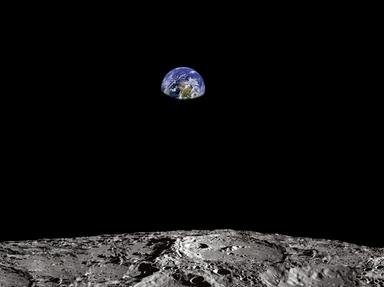Quiz Answer Key and Fun Facts
1. Buzz Aldrin was the first astronaut recruited to have a doctorate, which he gained in 1963 from which university?
2. Alan Bean was the final member of Group 3 to fly in space when he was brought onto the crew of Apollo 12. Bean was recruited for the flight to replace which of his group mates?
3. The fourth group of astronauts to be selected were the first group not to have served as test pilots, instead become NASA's first scientist-astronauts. Of the group of six, who was the only one to fly in space more than once?
4. Two of the six scientists recruited as part of Group 4 were engineers and two were physicians. The group also included a geologist, but in which branch of physics was the final member of the group trained?
5. Harrison Schmitt was the first member of his group to fly in space, and the only professional scientist to walk on the Moon. After he left NASA, he ran for office, and won election to the United States Senate in which state?
6. Joe Kerwin was the only member of Group 4 to fly in space that had previous experience as a pilot before being recruited by NASA. In which of the armed forces did he learn to fly?
7. NASA's fifth group of astronauts was the largest then recruited, with a total of 19 members, but which of them had already received astronaut wings when he joined NASA?
8. Ken Mattingly was scheduled to be one of the first of his group to fly in space, when he was assigned as the Command Module Pilot of Apollo 13. However, he ended up being replaced by Jack Swigert as a result of being exposed to which infectious disease?
9. Although Bruce McCandless was selected as part of Group 5, he did not fly in space until the space shuttle entered service. However, he achieved a notable first when he became the first person to make an untethered (not attached to the spacecraft) EVA while in orbit, during testing of the Manned Maneuvering Unit apparatus. From which Space Shuttle Orbiter did he do this?
10. The astronauts in Group 5 formed the bulk of crew members for both the later Apollo landing missions, and the missions to the US space station, Skylab. However, did more of them walk on the Moon, or serve on board Skylab?
11. Of the astronauts recruited as part of Group 6, who formed the second group of scientists to join the astronaut corps, Story Musgrave ended his time with NASA as by far the most experienced, flying in space six times, and becoming the only astronaut to fly on all five Space Shuttle Orbiters. His first flight was aboard Challenger, but on which orbiter did he make his last flight?
12. The seven members of NASA's seventh group of astronauts, all initially recruited following the cancellation of the Department of Defense's Manned Orbiting Laboratory program, formed the core of the early space shuttle crews. While Robert Crippen flew on the very first shuttle mission in 1981, which member of the group was part of the crew that flew the prototype Space Shuttle Orbiter Enterprise for the first time?
13. In order to make the best use of them, the Group 6 astronauts assigned to the Apollo programme served primarily in the new role of Mission Scientist, forming part of the support crew, to serve as the liaison between the flight crew and the scientific community. Who was the first to be so designated?
14. Richard Truly was one of the earliest of Group 7 to fly in space, but, after he decided to step back from being an astronaut, he rose in the ranks of administration. Which major role was he ultimately appointed to?
15. Forming as they did the bulk of the early space shuttle crews, the astronauts of Groups 6 and 7 flew a total of 32 missions between them, but which group flew more?
Source: Author
Red_John
This quiz was reviewed by FunTrivia editor
ponycargirl before going online.
Any errors found in FunTrivia content are routinely corrected through our feedback system.
